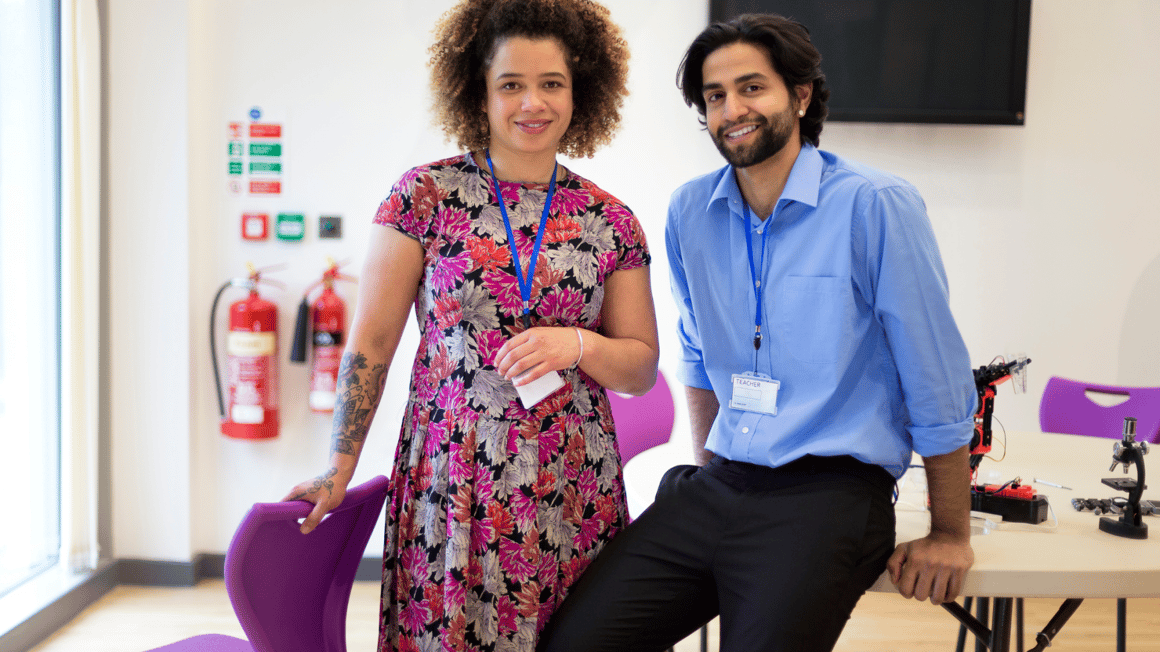

Published: August 03, 2022
It's long been said that two heads are better than one—is this also the case with collaborative teaching?
In education, the answer is a resounding yes! An Educational Research Review study showed that teacher collaboration not only improves student learning outcomes but also promotes professional development and boosts faculty morale. At the same time, team teaching requires more than practice and cooperation.
Effective collaboration leverages student data to drive educational decisions, optimize instruction and encourage professional learning. So, how can educators use their classroom data to support this alternative teaching style?
Let's take a look at what teacher collaboration really is, and how you can use data to maximize its potential.
What is Collaborative Teaching?
Collaborative teaching—also known as cooperative, team or parallel teaching—happens when two or more educators work in the same classroom to instruct and support a shared group of students. Professional learning communities have long used this approach for students with disabilities who receive special education support. It's not uncommon to see a special educator or paraprofessional co-teaching in a general education classroom.
However, this collaborative approach is often isolated, and is less prevalent and less coordinated more broadly, despite the evidence of its benefits.
A 2020 School Effectiveness and School Improvement study found that collaboration between teachers was primarily focused on the exchange of information and materials. While sharing data is essential for any teacher, collaborative teaching efforts shouldn't stop there. Educators should cooperate in and out of the classroom—analyzing student data trends together to inform their next joint lesson.
How Does Data Factor Into Teacher Collaboration?
Just like a single-instructor classroom, team teaching requires lots of student learning, behavior, and engagement data to paint a clear picture of academic and social development. In other words, the same principles of data-driven instruction still apply here. The only difference is that collaborative teaching offers the collective experience and analytical brain power of two education professionals working in tandem.
When teachers work together to collect, monitor, and evaluate the same student data, they can better identify trends and anomalies that indicate opportunities for improvement. They can also use these insights to reexamine the course material and assess the impact of any previous changes to instruction.
With this knowledge, parallel teachers can then discuss adjustments and develop targeted interventions that promote academic success.
Benefits of Data-Driven Collaborative Teaching
Using data to drive collaborative teaching efforts provides myriad benefits to students, staff and school systems, including:
- Improved learning outcomes: Data collected from student work and teacher observations can provide valuable insights that optimize team teaching for academic success.
- Professional development opportunities: Collaborative learning data enables both teachers to reflect on instruction and learn from each other to better meet student needs.
- Positive data culture: By collaborating with each other to collect data, analyze performance and make decisions, teachers develop a constructive culture around data use and co-teaching practices.
Using Data to Support Collaboration
In today's age of data-driven instruction, collaborative teaching provides a unique opportunity for educators to deliver instruction while simultaneously collecting student information.
With more hands on deck, and another set of analytical eyes, teacher pairs have a greater ability to gather and evaluate information on student engagement, behavior and soft skills in the classroom. This provides a cohesive view of student performance and enables each instructor to better address educational equity issues.
As with single-teacher classrooms, collaborative teaching follows a relatively straightforward outline for data use. To help you understand how to best leverage data-driven collaboration in your classroom, here's a simple three-step process to follow:
Step 1: One Teacher Observes, the Other Instructs
While one instructor is delivering instruction or directly engaging with students, the other teacher can be a classroom observer. In this position, the goal is to simply jot down notes about student behavior. Identify attentive students and those that look lost. Are any of them sleeping, or distracted, or showing signs of confusion? Observation can provide valuable insights into which students might need additional support in the moment, or later on.
Step 2: Sharing Data Post-Lesson
After class, the data collector and instructor can sit down to share information around student engagement and discuss the effectiveness of the lesson plan. During this stage, it's important to track the impacts of any previous changes to instruction workflow.
Using a student data platform, educators can filter for relevant students or lessons, and visualize their findings with charts or graphs. Collaborating teachers can even share these reports with their broader professional learning community for additional collaborative insights.
Step 3: Using Insights to Inform Next Steps
The final phase before the next lesson is to use your data insights to inform instructional decision-making. If a group of students is struggling to comprehend core concepts, tandem teaching can enable differentiated instruction for individual learner groups. Data can also promote better collaboration as teachers can identify strengths and improvement opportunities in each other's instruction. However, it's important to keep all notes constructive to foster a truly collaborative environment.
Data-Driven Collaborative Teaching
Schoolytics helps teachers take data-driven collaboration to the next level. Our powerful student data platform centralizes information across multiple systems with dashboards that provide real-time updates on student performance.
Ready to let data drive your collaborative efforts? Create a free teacher account today or request a demo for your district.


